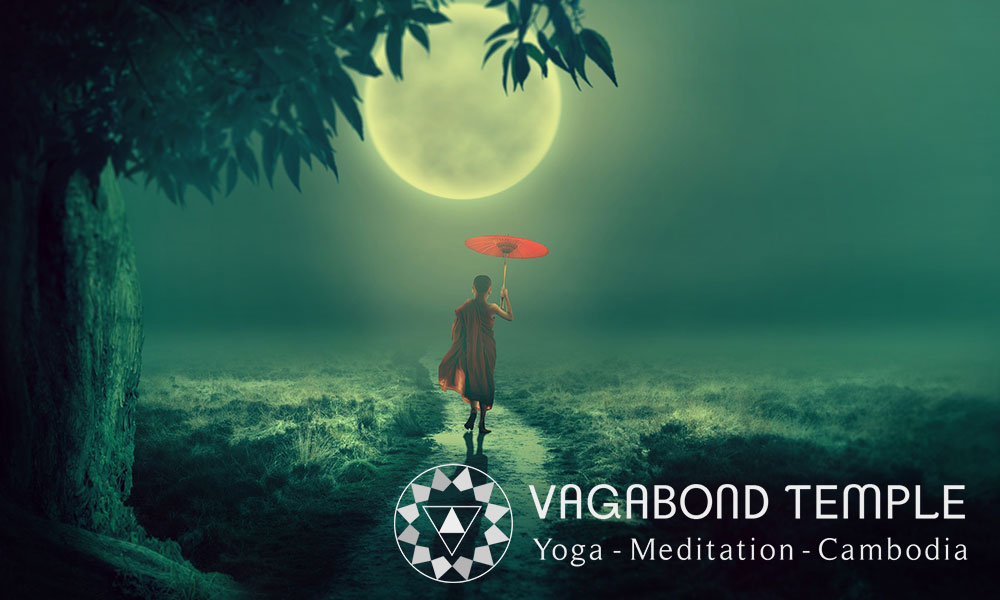Distract Yourself, or Know Yourself? Your Choice

We live in a world filled with distractions. In fact thanks to smart phones most of us are now walking around with an entire world of distractions in our pocket! Endlessly watching TV shows, or scrolling down and down and down through Facebook is not particularly fulfilling – but still we somehow cannot help ourselves. It is not just entertainment, there are many habits we can develop that really just serve to distract us: comfort eating, over-working, drugs & alcohol, even spiritual practices can be a type of escapism.
The question is, what is it that we are trying to distract ourselves from? We hear so much in spiritual talk about the virtues of the present moment, but if the present moment is so great then why are we always trying to run away from it?
If we remove all distractions and just sit, instead of experiencing a Zen-like state of transcendent bliss we may actually feel pretty uncomfortable. This is because instead of finding that elusive present moment we hear so much about, we have come face to face with the contents of our mind (the stuff we have spent a lifetime distracting ourselves from!). The mind can be filled with fears, desires, agitation and anger – it is no surprise we feel the need to stay distracted. Unfortunately many of the distractions provided by modern society only succeed in filling the mind up with more crap, causing us to crave more distraction and so on… getting us further and further away from reality. Basically they do not work, we cannot escape ourselves. So instead of trying to run away, it makes much more sense to face and ultimately make peace with the contents of our minds.
Calming the mind is a skill like any other that can be learnt, but it is not so easy to calm a mind that is constantly running from one place to another. It is not just the distractions that make it challenging, modern society is so focused on “doing” that life can seem to be no more than an endless series of tasks. However if we are to calm the mind, we need to practice the art of just being. Wounds heal a lot faster if we are able to rest, but the simple act of resting seems to have become much neglected these days! Resting is not sitting on the sofa feeling guilty about not doing something more productive, nor is it about distracting oneself with TV or the internet, real resting is not doing anything – just being.
One teacher who has much to say about the act of simply being is the Thich Nhat Hanh, the Vietnamese Buddhist monk who has inspired millions of people world-wide with his common-sense, accessible approach to spirituality.
Thich Nhat Hanh explains that a very simple way to stop the mental agitation is to bring the attention to the breathing. The breath is the perfect meditation object because it is always with you – whether you are sitting in meditation or arguing with a colleague at work! You may have noticed that troublesome thoughts feed each-other: instead of resolving whatever it is you are worrying about, you will often go round in circles getting increasingly agitated. Bringing the attention to the breath interrupts this process. It is so simple yet so effective.
Of course it takes practice, often we may have gone round in many circles of thought before we realise it. Or we may focus on the breath only for a very short time before getting carried away again. But with practice it will eventually become second nature – once the mind figures out that being calm is actually preferable to worrying about a million things. In a situation where your thoughts and emotions are starting to make you uncomfortable, your reflex action may be to reach for your phone or switch on the TV and distract yourself – instead try bringing your attention to the breath.
In fact we can bring attention to whatever we are doing, walking, cooking, cleaning up. When we do this, again we interrupt the cycle of thoughts that can disturb us. Practicing this in daily life will make it easier to spend time “just being”, which will make it easier to remain present in everyday life… and so in in a kind of beautiful circle. Bringing the attention to the breathing, or the situation is such a simple technique (anybody can do it at any time) but its power can be truly extraordinary. Having no time to practice is no longer a valid excuse when, by bringing attention to the present moment, you can make absolutely anything you do into a spiritual practice!
Thich Nhat Hanh speaks of unhelpful thought patterns or behaviours as “habits” – things we have become so accustomed to engaging in that we do it automatically. He states that we practice mindfulness “in order to recognise the habit energy every time it manifests”. This way we are no longer on autopilot, when we notice ourselves going into the habitual pattern (e.g. of ruminating on distressing thoughts, or distracting ourselves in some way) we are able to break it.
That which is habitual is hidden to us, to start with we may not even understand why we feel the need to distract ourselves – it is just what we do. We may not even be aware of the waves of thoughts and emotions we experience.
In the Kabbalist tradition it is said that anything negative gains power over us by being hidden, once we shine a light on it loses its strength. Take for example a negative thought, such as “I’m not good enough”. If we do not notice it we may simply avoid doing many things and in this way the thought has much power over us. If, however we simply shine a light on the thought, it may seem very uncomfortable at first, however with sustained attention the thought will lose its power over us. It is like shining a light on the thought and saying, “I see you!” which causes it to become embarrassed and run away!
This process of acknowledging thoughts and feelings can be broken down into four steps. These can be carried out whenever a disturbing thought or emotion is recognised.
1) Recognition
As stated, it is the hidden nature of negative thoughts and feelings that gives them power. Simply to notice whatever comes up puts us at an immediate advantage.
2) Acceptance
Trying to push a thought away creates more negativity (i.e. feeling angry about being angry!). Engaging in some kind of distraction will mean the problem will remain hidden, thus still hold power over you. To acceptance is not resignation, in fact it is the opposite – by accepting whatever there is we have the chance to move beyond it.
3) Embrace
This seems counter-intuitive at first, when faced with something negative such as anger, the immediate reaction would be to push the thought away through distraction or breaking off into further thoughts or actions. Embracing an unpleasant feeling will at first feel like the absolute last thing you want to do, but bite the bullet and try it!
If we turn towards the disturbance, with love, holding it in the same way a mother holds her baby, it
4) Insight
With acceptance and embracing comes insight. We recognise the source of the thought or feeling, so rather than just treating the symptom we can work on the root cause.
Thich Nhat Hanh sees the need for distraction as a fear, a fear to face our own pain, but it is only by facing it that we will understand the nature of suffering. When we understand this, we become compassionate as we understand the suffering of others. So facing the pain is something essential to the path. This is not to say that life has to always be painful, there are many beautiful experiences to be had, its just that we should not deny the existence of the negative feelings. If we cover up our pain through endless distractions, how can we ever understand it?
Often one emotion can be found hiding behind another, if we closely examine anger we may find a feeling of fear or vulnerability – this can be hard to admit sometimes but with the process of accepting and embracing it becomes much easier. Insight can mean seeing the origins of certain feelings and habits we have, as in the Western psychoanalytic tradition – but it goes much deeper. The Buddhist view holds that suffering comes from an incorrect view of reality, an illusion that we are separate selves. This causes us to grasp at some things, and push others away.
As long as we continue to play this game we will suffer. The Buddhist tradition does not suggest that you believe this because the Buddha says so, but invites you to see for yourself. The ultimate aim of mindfulness is gain “insight” into the nature of suffering in order to find liberation… but if that sounds a bit deep you can always just go on Facebook instead!
For anybody who is interested in this subject we would highly recommend “The Heart of the Buddha’s Teaching” by Thich Nhat Hanh



